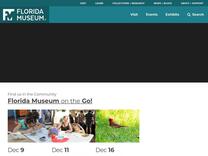Monday with the Manatee Storytime – Florida Museum https://www.floridamuseum.ufl.edu/event/manatee-storytime/
Join us for a morning of learning and fun in the new Water Shapes Florida exhibit as we read the book Kobee Manatee Heading Home to Florida! This award-winning book, written by Robert Scott Thayer and illustrated by Lauren Gallegos, follows the adventures of Kobee and his ocean friends as t
Along the way, they encounter danger, excitement, and learn about the importance

